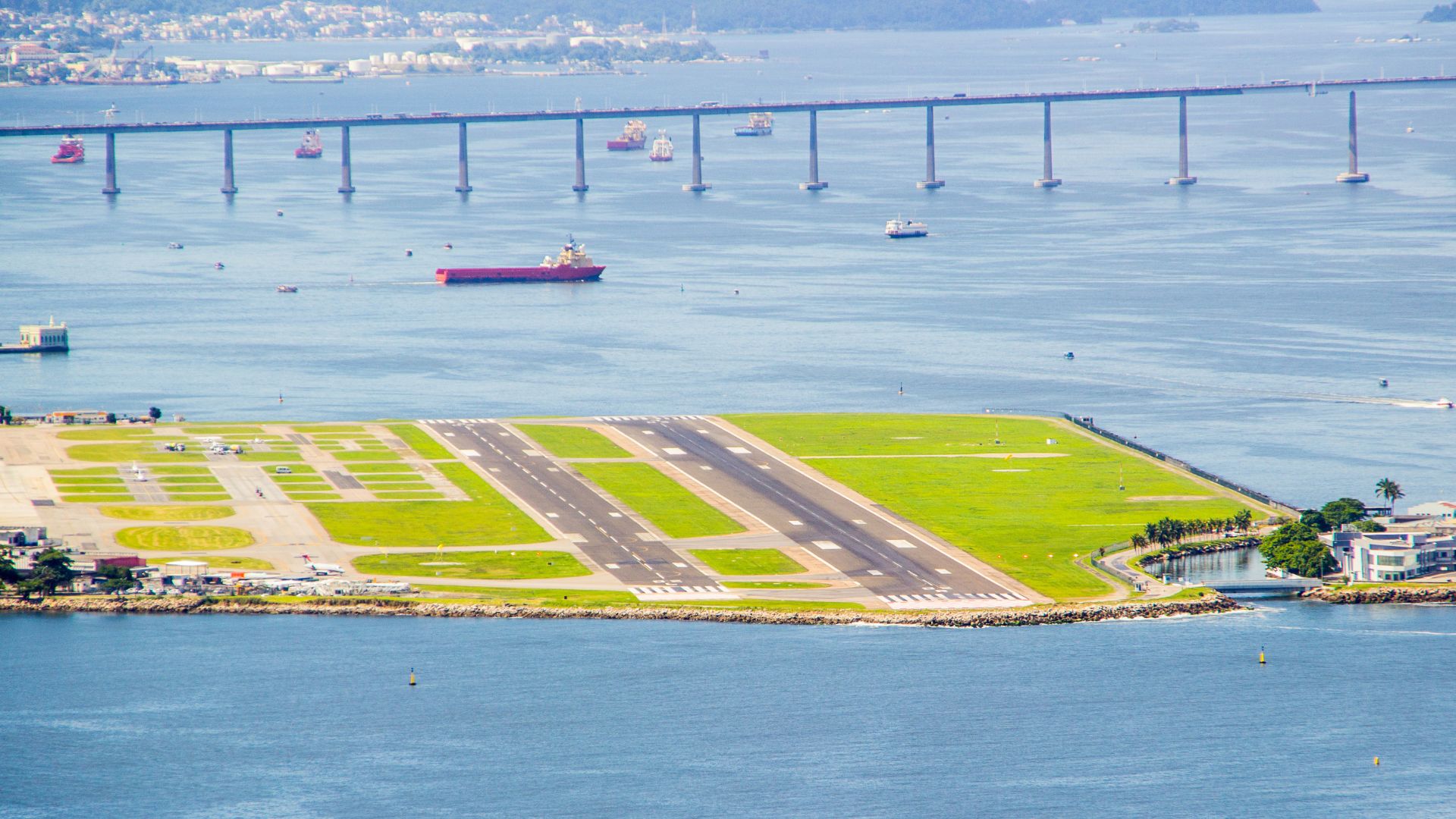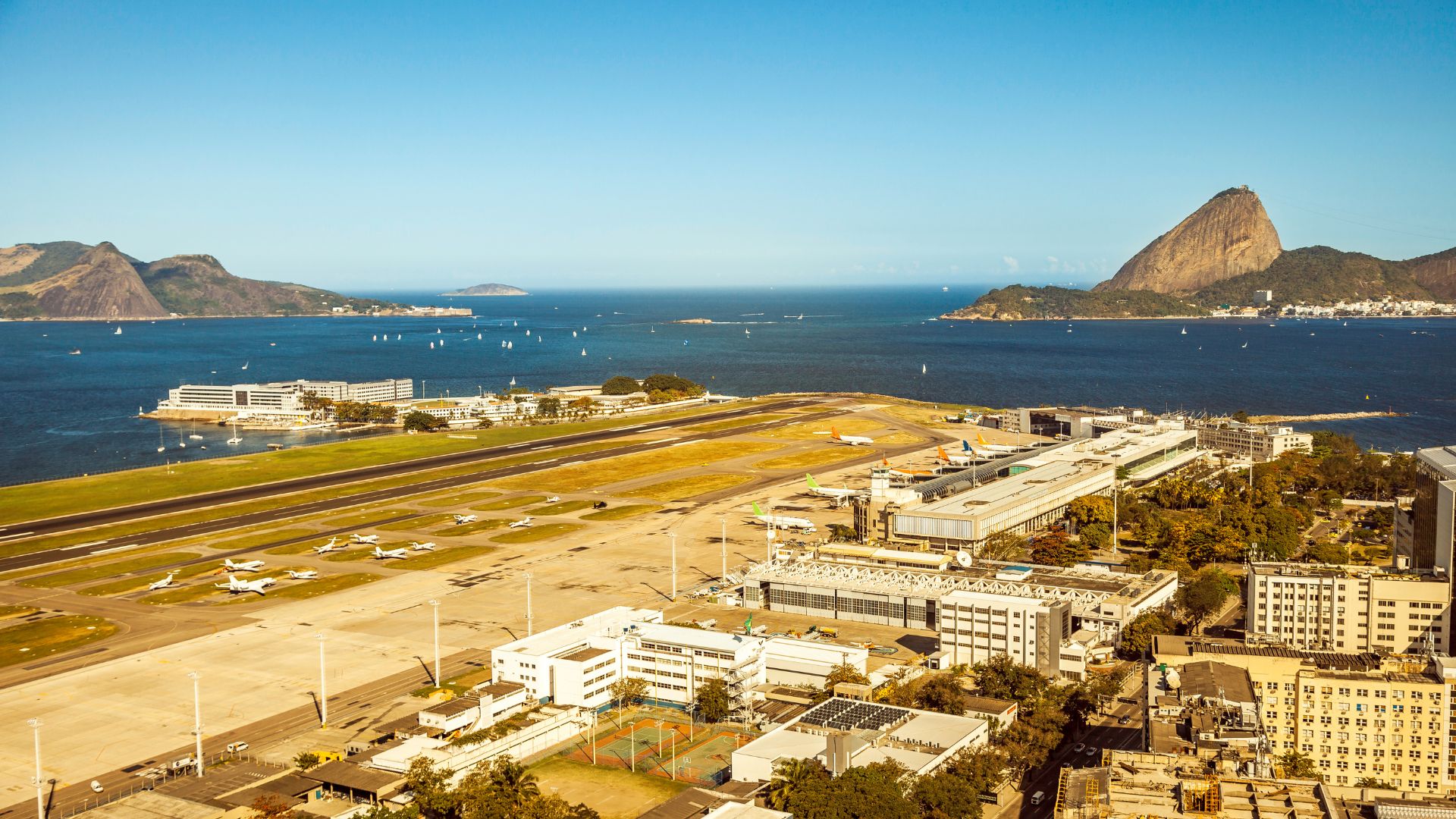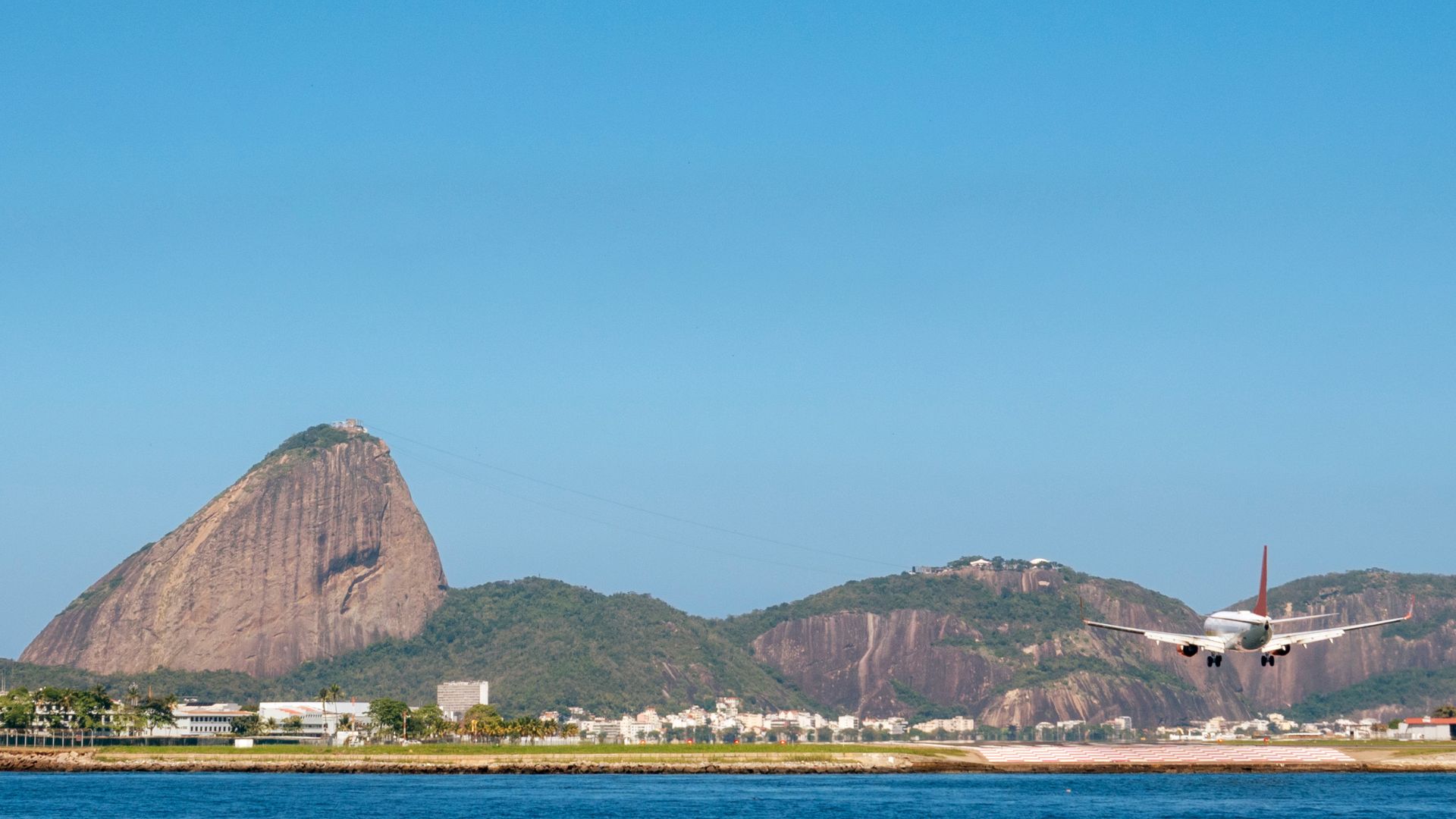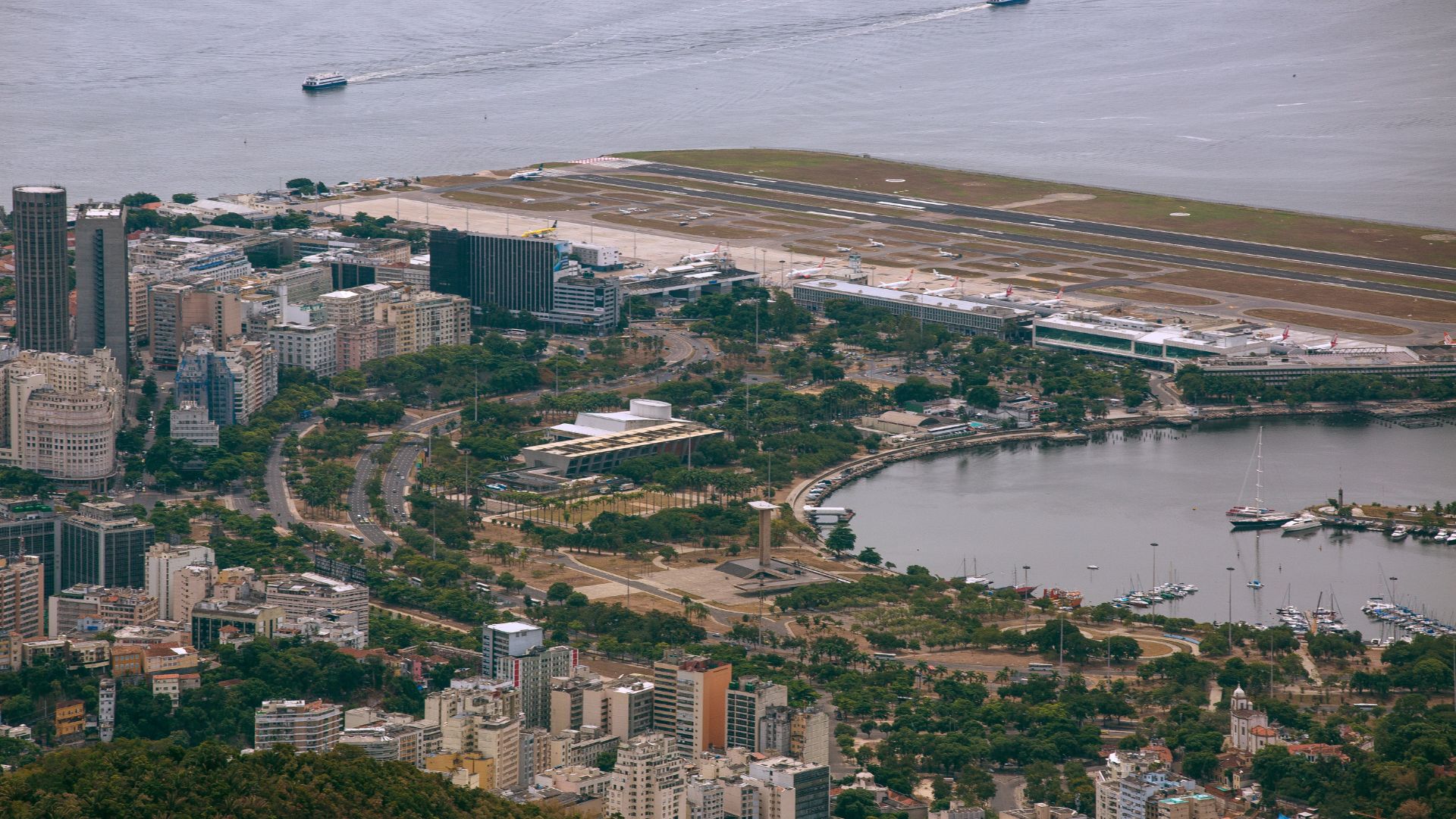Landing in Rio de Janeiro is like arriving at the doorstep of paradise—that is, until you realize you’re facing a 90-minute taxi ride in rush-hour traffic from Galeão Airport to your Copacabana hotel.
On my first trip to Rio back in 2018, I made every airport mistake in the book. Now, after countless flights through both Rio airports (and one memorable incident involving a missed connection and an impromptu overnight at the airport hotel), I’ve compiled this guide to save you from my blunders.
Trust me, knowing the quirks of Rio’s airports is the difference between starting your vacation with a caipirinha on the beach or stuck in gridlock wondering if your taxi meter is rigged.
Rio is served by two distinctly different airports: the larger international Galeão (GIG) and the smaller, centrally-located Santos Dumont (SDU). Each has its pros and cons, and knowing which one suits your needs can make a world of difference to your Rio experience.

Understanding Rio’s Two Airports at a Glance
Before diving into the details, here’s the quick comparison:
Galeão International Airport (GIG)
- Handles most international flights and some domestic routes
- Located about 20km north of downtown Rio
- Larger, more modern facilities
- Longer transfer times to popular tourist areas
Santos Dumont Airport (SDU)
- Almost exclusively domestic flights
- Located right in the city center
- Spectacular approach with views of Sugarloaf Mountain
- Quick access to downtown Rio and South Zone beaches
Galeão International Airport (GIG)
Also known as Rio de Janeiro–Antonio Carlos Jobim International Airport (that’s a mouthful, I know), Galeão is where you’ll likely arrive if you’re flying in from another country.
What I Love About It
The approach to Galeão offers stunning views of Rio’s coastline on a clear day, and the airport itself is reasonably modern. Terminal 2 handles both domestic and international flights, while Terminal 1 houses operations centers and other services.
Getting There and Away
Here’s where things get tricky. Galeão is about 20km from the city center, and Rio’s traffic can be, well, challenging.
Top Tip: Pre-arrange your airport transfer to avoid the notorious airport taxi scams. I’ve seen too many visitors starting their vacation with an unnecessarily expensive ride.
Your main transport options are:
- Uber: Generally the safest and most cost-effective option. Just be sure to use the app rather than accepting offers from people inside the terminal. Follow airport signs to the official Uber pickup zones. Expect to pay around R$70-100 to Copacabana or Ipanema, depending on time of day and demand. The app works just like it does back home, and most drivers understand basic English.
- Official Airport Taxis: More expensive than Uber but readily available. Insist that the driver uses the meter (taxímetro in Portuguese). You’ll find the official taxi stands immediately outside the arrivals area. A ride to Copacabana runs about R$100-130. Don’t be alarmed when the driver adds the toll for the Linha Vermelha expressway to your fare—this is standard practice.
- Shuttle Services: Companies offer shared transfers to most tourist areas for around €14.57 per person. They run hourly from 7AM to 10PM, with an extra departure at 3AM. The benefit here is fixed pricing and comfortable vehicles, but you’ll need to wait for other passengers and make multiple stops. Look for the shuttle counters in the arrivals hall or book online in advance.
- Private Transfers: Expect to pay about €20-30 for a private transfer to the South Zone (Copacabana, Ipanema, etc.). These need to be booked in advance. For those concerned about safety or traveling with families, companies like Brummie Lines offer VIP services with armored vehicles for around 450 BRL (about 90 USD).
- BRT (Bus Rapid Transit): The cheapest option at around R$15-20, but you’ll need to navigate the system with your luggage. It’s a two-step process: first take the BRT TransCarioca line from the airport to Vicente de Carvalho station, then transfer to the metro system. While budget-friendly, I wouldn’t recommend this for first-time visitors or those with substantial luggage.
Bear in mind: The journey to Copacabana or Ipanema typically takes 45-60 minutes, but can stretch to 90+ minutes during rush hour. The Linha Vermelha expressway can get particularly congested between 4-7PM on weekdays. If you’re arriving during these times, I’d add at least 30 minutes to your estimated journey time.
Airport Facilities
For an international airport, Galeão has decent amenities:
- Duty-Free Shopping: Remember, buying from duty-free upon arrival gives you an additional $1,000 allowance (on top of your $1,000 abroad purchase limit). The duty-free stores stock the usual international brands, but look for Brazilian specialties like cachaça (the sugar cane spirit used in caipirinhas) and Havaianas flip-flops. The prices aren’t necessarily cheaper than in the city, but the selection is good.
- VIP Lounges: Available for premium passengers or those with lounge access cards. The Plaza Premium Lounge is the main option, as some airline lounges have closed post-pandemic. It offers comfortable seating, decent Wi-Fi, simple hot and cold food options, and an open bar. Access costs around $35 USD if you don’t have lounge membership, and you can book in advance online.
- Food Options: Various cafes and restaurants, though prices are predictably inflated. Delta Espresso Café is popular for a quick coffee. For something more substantial, try Viena or Cuomo for sit-down meals. If you’re looking to save money, there’s a small supermarket in Terminal 2 where you can pick up snacks and drinks at more reasonable prices.
- Wi-Fi: Free throughout the airport, but the connection can be spotty. You’ll need to register with an email address or social media account.
- ATMs and Currency Exchange: Available in both arrivals and departures areas. The exchange rates aren’t great, but they’re convenient in a pinch. I’d recommend withdrawing some Brazilian Reais from the ATMs rather than exchanging currency, as the rates are usually better.
- Overnight Stays: The Linx Galeão Hotel offers 24-hour free airport transfers every 20 minutes—a lifesaver for late arrivals or early departures. Rooms are basic but clean, with rates starting around R$350-400 per night.

The Layout
Terminal 2 is where all the action happens now. When you arrive for an international flight, you’ll first go through immigration (which can take anywhere from 10 minutes to an hour depending on how many flights have landed), then collect your bags and pass through customs.
For departures, check-in counters are on the first floor. After security, which usually moves reasonably quickly, you’ll find yourself in the main shopping and dining area before heading to your gate.
Top Tip: If you’re connecting to a domestic flight after an international arrival, you’ll need to collect your bags, clear customs, then re-check your bags at your airline’s domestic counter. Allow at least 2-3 hours for this process.
The Reality Check
I have to be honest—Galeão has seen better days. Passenger numbers have declined in recent years, and some parts of the airport feel underused. You’ll notice fewer flights and reduced foot traffic compared to what you might expect from an international airport in a major tourist city.
This has some benefits though—security and passport control are generally efficient, and the airport rarely feels overcrowded. On the downside, some shops and restaurants have closed, and parts of the airport might seem eerily quiet.
The airport was modernized for the 2014 World Cup and 2016 Olympics, so the infrastructure is relatively updated. Just don’t expect the buzzing atmosphere of major international hubs like Heathrow or JFK.
Santos Dumont Airport (SDU)
Santos Dumont might be smaller than Galeão, but what it lacks in size, it makes up for in convenience and views. Situated on reclaimed land adjacent to downtown Rio, it’s primarily used for domestic flights.
What I Love About It
I still can’t get over the landing at SDU even after dozens of flights. The approach offers breathtaking views of Rio’s landmarks, with planes seemingly skimming over Guanabara Bay. Keep your camera ready as you’ll get unparalleled views of Sugarloaf Mountain, the Rio-Niterói Bridge, and the city center.
If you’re flying in, try to get a window seat on the right side of the aircraft for the best views on approach. The sight of your plane banking around Sugarloaf Mountain before landing is truly one of the most spectacular urban approaches in the world. I’ve seen experienced business travelers pause their work to look out the window—it’s that impressive.
The thrill isn’t limited to arrivals either. The departure experience offers equally stunning vistas as your plane climbs over Guanabara Bay. No wonder Santos Dumont is often listed among the world’s most scenic airports.
Getting There and Away
The beauty of Santos Dumont is its location. It’s so central that you can actually walk to many downtown destinations:
- Walking: Feasible to the city center and some business districts.
- VLT (Light Rail): Connects directly to the metro system and Rio’s main bus terminal.
- Taxis and Uber: Readily available and affordable due to the short distances to most destinations.
- Shuttle Services: Available to South Zone hotels for around €14.57 per person, with regular departures from 7AM to 10PM.
Top Tip: If you’re traveling between Rio and São Paulo, the SDU (Rio) to Congonhas (CGH) route is highly recommended—both airports are located near their respective city centers, making transfers a breeze.
Airport Facilities and Layout
Despite its small size, Santos Dumont is efficiently laid out across three floors:
- Ground Floor: This is where you’ll find check-in counters, airline offices, and some retail shops. If you’re being dropped off, this is where you’ll enter.
- First Floor: Home to departures, security screening, and some of the VIP lounges.
- Second Floor: Additional restaurants and services, including the Bradesco Card Lounge.
The facilities include:
- Bossa Nova Mall: Attached to the airport, offering shops, restaurants, and banking services. The mall’s food court gives you more dining options than the airport itself, often at better prices. The Prodigy Santos Dumont Hotel is also located here, perfect for early flights or quick overnight stays.
- Panoramic Boarding Area: The modern glass structure provides stunning views of the bay and city while you wait for your flight. The terminal was renovated a few years back, and the all-glass boarding area is its crown jewel. You’ll find plenty of seating and charging ports throughout.
- VIP Lounges: The Advantage Lounge and Bradesco Card Lounge are available for eligible passengers. These lounges aren’t as lavish as those at larger airports, but they offer comfortable seating, basic food and drinks, and a quiet space away from the terminal hubbub.
- Sustainability Features: The airport has surprisingly robust eco-credentials, including solar panels that generate enough electricity to power the equivalent of 730,000 hot showers and a water reuse system with 1-million-liter capacity.
Food and Shopping
The dining options at Santos Dumont are fairly limited but adequate for a small airport:
- Inside the terminal, you’ll find the usual suspects like Starbucks and a few casual eateries offering sandwiches and simple meals.
- For better options, head to the Bossa Nova Mall food court, where you’ll find everything from fast food to more substantial Brazilian cuisine.
Shopping is similarly basic but includes essentials like:
- Air Farma Drugstore: For any last-minute health or personal care needs.
- Aqualung: For beach essentials (this is Rio, after all).
- Duty-Free: Available for international flights, though the selection is limited.
The Reality Check
Santos Dumont gets busy—very busy. Despite being much smaller than Galeão, it handles a huge number of passengers. Security queues can get long during peak hours, so arriving early is recommended. The busiest times are typically Monday mornings and Friday afternoons, when business travelers are on the move.
The boarding gates 9 to 14 require a shuttle bus to reach the aircraft, as they don’t have jet bridges, which can add time to your boarding process. When it rains (which happens frequently in Rio), this can be particularly inconvenient.
Another quirk: because of the airport’s position right in the city and its short runway, larger aircraft can’t operate here. This means if you’re flying domestically on a Boeing 737 or larger, you might end up at Galeão instead.

Choosing Between GIG and SDU
Your choice might be dictated by your flight options, but if you have flexibility:
- Flying internationally: You’ll most likely use GIG by default.
- Domestic connections: Consider SDU for its convenience, especially for short stays.
- Rio to São Paulo: The SDU to CGH route is ideal for business travelers and those wanting city-center access.
- Layovers: If you have 6+ hours at GIG, you might have time to visit one major attraction like Sugarloaf Mountain, but plan carefully.
Safety Notes for Both Airports
Rio requires some street smarts, and this starts at the airport:
- Avoid unofficial transportation offers as you exit baggage claim—these could be scams.
- Use official channels like the Uber app or authorized taxi services.
- Keep valuables secure and maintain awareness in crowded areas.
- VIP transfer services like Brummie Lines offer more secure options with armored vehicles for those particularly concerned about safety.
Navigating Immigration and Customs
If you’re flying into Galeão internationally, here’s what to expect when you land:
Immigration Process
Brazilian immigration is generally straightforward but can be time-consuming depending on when you arrive:
- Forms: You’ll need to fill out an immigration card either on the plane or upon arrival. Hold onto the portion they return to you—you’ll need it when you leave Brazil.
- Passport Control: Lines can vary wildly. Early morning arrivals from Europe and late evening arrivals from the US can see wait times of up to an hour. Midday tends to be quieter.
- Visa Requirements: Check if you need a visa before traveling. Many nationalities, including Americans, Canadians, and Australians, no longer need tourist visas for stays up to 90 days.
Top Tip: The e-gates for Brazilian citizens and residents often have much shorter queues. If you have Brazilian residency or citizenship, make sure to use these!
Customs Declarations and Allowances
After collecting your luggage, you’ll proceed through customs:
- Green Channel: Nothing to declare (most travelers)
- Red Channel: For those with goods to declare or exceeding allowances
Allowances include:
- Up to $1,000 USD in goods purchased abroad
- An additional $1,000 USD from duty-free shops upon arrival
- Up to 12 liters of alcoholic beverages
- Up to 200 cigarettes or 25 cigars
Bear in mind: Customs officials can and do perform random checks. While they’re generally looking for commercial quantities rather than personal items, it’s best to stick to the allowances.
Baggage Services and Issues
Lost luggage at Galeão isn’t common, but it happens. If your bags don’t arrive:
- File a report at your airline’s baggage service counter before leaving the baggage claim area
- Ensure you have your baggage claim tags
- Get a copy of the Property Irregularity Report (PIR)
- Ask for an emergency kit if you’re without essentials
Most hotels in Rio can receive your delayed luggage when it arrives, so you don’t need to return to the airport.

Rio Airport Takeaways
Whether you’re arriving at the panoramic Santos Dumont or the international Galeão, your Rio adventure starts the moment you land. Both airports have their quirks, but they’re your gateway to one of the world’s most beautiful cities.
If you’re flying domestically within Brazil, the convenience of Santos Dumont is unbeatable. If you’re coming from abroad, embrace the slightly longer journey from Galeão as part of your adventure—and use the time to brush up on your Portuguese phrases!
One last piece of advice: Rio operates on “Rio time,” which means things might move a bit slower than you’re used to. Embrace this relaxed pace from the moment you land, and you’ll be in the right mindset to enjoy this incredible city.
FAQs
How many airports are there in Rio de Janeiro?
Rio has two major airports. Galeão International Airport (GIG) handles international and some domestic flights, while Santos Dumont Airport (SDU) serves primarily domestic routes. Both offer different benefits depending on your travel needs.
What airport do you fly into for Rio?
International travelers fly into Galeão Airport (GIG). It’s Rio’s main international gateway, processing most foreign arrivals. Domestic travelers might land at either Galeão or Santos Dumont, depending on their departure city and airline.
What is the difference between GIG and SDU?
GIG is Rio’s international airport located 20km from downtown, while SDU is a smaller domestic airport in the city center. GIG handles long-haul flights with more amenities, while SDU offers incredible views and quicker access to tourist areas.
What is the main airport in Brazil?
São Paulo’s Guarulhos International Airport (GRU) is Brazil’s main airport. It handles the most international traffic in the country, serving as Brazil’s primary aviation hub. Rio’s Galeão ranks as the second-busiest international gateway.
Which airport is closest to Copacabana?
Santos Dumont Airport is closest to Copacabana. You can reach this famous beach in just 10-15 minutes by taxi from SDU, while the journey from Galeão typically takes 45-60 minutes depending on traffic conditions.
How do I get from Rio airport to center?
From Santos Dumont, take a 10-minute taxi or use the VLT light rail. From Galeão, options include Uber (45-60 minutes), official taxis, hourly shuttle services, or the BRT system connecting to the metro. Pre-booking transfers is recommended.